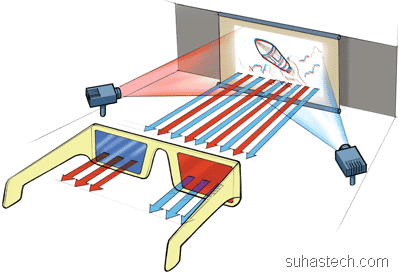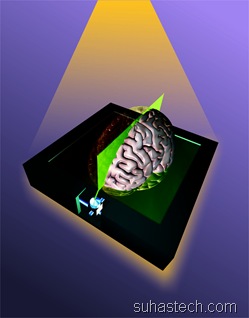How 3D works?

Multi tool use
3D has been all over the place. Movies, TVs, everywhere!…..even real life! Ever wondered how it works? Here’s a layman’s view into the 3D world.
Before everthing, How humans perceive depth?
There are 2 ways we, humans, perceive 3D – Convergence and parallax. Most 3D technologies today take advantage of the convergence method. There is a slight difference between the images seen by each eye. That’s called Binocular Disparity or sometimes called, stereo vision.
If you think about it a little bit, you can actually formulate an equation to calculate the depth and name it, “your name here” formula of awesomeness :D. (psst….trigonometry). Here’s an infograph that’ll explain everything.

So, what 3D movie makers do, is simulate the whole 3D experience
 using 2 cameras filming the same event, one beside the other. (though computer animated movies work differently, completely software)
using 2 cameras filming the same event, one beside the other. (though computer animated movies work differently, completely software)- then feed the left channel to the left eye and right channel to the right eye.
There are tons of ways to do that. I’ll try to show some of them.
Anaglyph technology (red-cyan or red-green):
This is mostly used in home entertainment systems because of the ease of setup. Just a normal color TV and a pair of 3D glasses would be sufficient. These are also used in these little comics. One thing you miss here is color. That might be one reason for its unpopularity.
Here, it uses basic color filters. The right glass (red) filters out the left channel (blue) and vis-a-versa.
 Also, if you watch badly formed 3D movies which gives conflicting information to your brain, you might a headache.
Also, if you watch badly formed 3D movies which gives conflicting information to your brain, you might a headache.
Polarization:
Same principle, but here, color is retained. This is the preferred method used in big cinemas like IMAX, Disney etc. Next time you go to a 3D movie, try to look over to that projection box. You’ll find 2 projectors working. Each producing lights with different polarization. The purpose of 3D glasses is to feed each eye, these different images (again left channel to the left eye, right channel to the right).
One disadvantage would be the cost of the setup. The screen should be silvered to avoid losing polarization when reflected off the screen. So, its not used for home viewing.

Liquid Crystal Shutter Glasses:
 This is the newest boy in town. Most manufacturers are releasing a 3D iteration of their TVs. Actually they are no different from a normal LCD but will have a high refresh rate and some emitters I guess.
This is the newest boy in town. Most manufacturers are releasing a 3D iteration of their TVs. Actually they are no different from a normal LCD but will have a high refresh rate and some emitters I guess.
For now lets say an LCD has 120 hz (120 frames per second) refresh rate. 60 frames of left and right images are shown alternatively. The left and right lens’ darken and lighten 60 times alternatively. Liquid crystals cause this to happen. Synchronizing information about when to darken and when to lighten can be given in a number of ways. Wired shutter glasses use wires (duh!). Wireless use IR emitters on the TV (that exactly is the specialty of these new age 3D TVs).
Why high refresh rate you ask me? Persistence of the human eye is about 1/100th of a second. So, if you have an LCD with low refresh rate, its smart enough to know that the TV is confusing it.
3D without glasses?
My mind has been wandering over 3D simulation, without 3D glasses. It seems that good folks over at the  university of Arizona have cracked the puzzle making 3D holographic screen. Kudos to those people!!
university of Arizona have cracked the puzzle making 3D holographic screen. Kudos to those people!!
Also, Toshiba seem to have found a solution using the parallax barrier method, which I previously mentioned.
Stay tuned for part 2 of this series (How to make 3D movies!).
